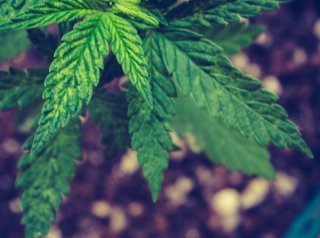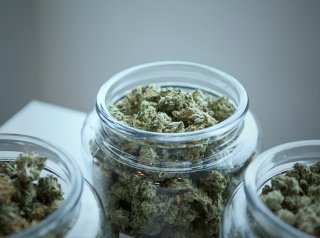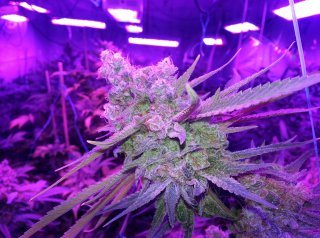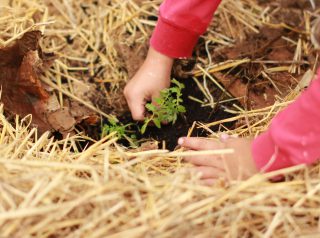Seeing marijuana leaves turn yellow is an alarming sight. As if that is not bad enough, spots, patches, curling, and wilting may soon follow. Since there are so many reasons behind the discoloration, it can be hard to pin down the root cause. But if you know what to look for, then diagnosing the problem is doable, and you can save the plants.
In this article, we list down the most common causes of yellow leaves – as well as how to make the foliage green and healthy again.
Page Content
What Causes Marijuana Leaves To Turn Yellow
Yellowing leaves is one problem everyone encounters – including experienced growers. Of course, they probably do not have to deal with this problem as much as someone new to growing marijuana. But do not worry – it is solvable, and you will have the plants hale and hearty in no time. It is just a matter of making some simple tweaks in the grow room.
When troubleshooting, the first step is to identify the source of the problem. There are many reasons why the leaves might turn yellow. It can be poor watering practices, improper pH levels, nutrient deficiencies, and pests, among others. The plants may also suffer from more than one.
At any rate, go through the list below to know which category the afflicted plants fall into. Inspect afterward and note any unusual signs aside from discoloration. If you have a grow journal, it is time to whip it out. Administer treatment only when you are a hundred percent sure with your diagnosis.
1. Light Burn And Heat Stress
Cannabis plants, although hardy, can only endure a certain amount of light and heat. Indoors, the grow light needs to be close enough to provide ample illumination, but far enough so that they will not burn the upper canopy.
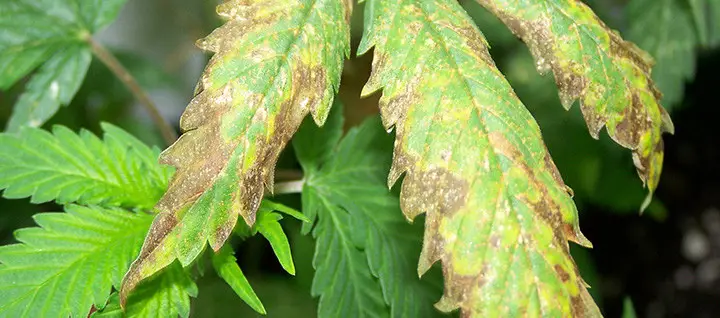
If positioned too close, the heat can be excessive, causing the leaves to start yellowing, curling, wilting, and showing other signs of heat stress.
Light burn is more likely to occur with the use of high-intensity discharge (HID) lights. These bulbs – metal halide (MH) and high-pressure sodium (HPS) – provide excellent results but emit a lot of heat. Although more expensive, many are turning to LED and LEC lamps, which does not emanate as much heat but nonetheless could still do so if improperly positioned.
How To Remedy Heat Stress
Light burn typically takes a few weeks to develop. The signs may also differ from plant to plant. Once you see a sign, such as yellowing leaves, the first step is to adjust the lamp, increasing its distance from the canopy. Wait for the plants to recover before gradually moving the bulbs closer. Do not rush it – around a few centimeters at a time will do. Keep at it until you cover the recommended distance between the lights and the bulbs. (Refer to the instruction’s manual of the chosen lamp for more information.)
To avoid heat stress, you need to maintain ideal temperature levels. Remember, cannabis plants prefer a bit of warmth. During the vegetative stage, it should fall around 70 to 85°F (21 to 29°C). Flowering plants, on the other hand, flourish at 65 to 80°F (18 to 29°C). At lights off, slightly lower the temperatures by about 10 degrees.
2. Underwatering
The leaves – both the older and newer growth – can turn yellow when the plants receive too little water. Devoid of water, the leaves soon droop, become brittle and papery, and have burnt-looking leaf tips.
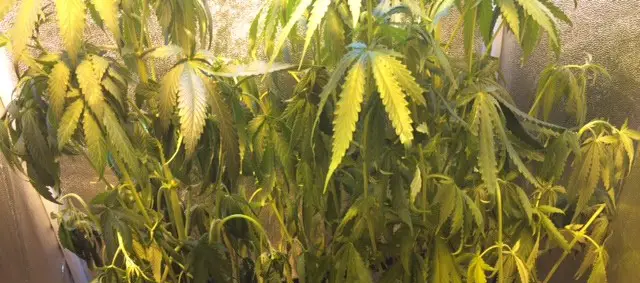
Underwatering can be hard to diagnose since the signs are similar to nutrient deficiencies. An indication of dry plants is if they perk up or look rejuvenated after being watered.
How To Prevent Underwatering
It is easy to nurse dehydrated plants back to health. All you have to do is water the plants more often. Be careful not to overwater, ensuring that excess water seeps out of the drainage holes. If growing in soil, water as soon as the top inch feels dry. You can also spray some water on the shriveled leaves to help rejuvenate them.
Growing in too-small containers may also result in underwatering problems. It causes the medium to dry out too quickly, leading to drought conditions at the roots. Hence, make sure to transplant the plants as soon as they outgrow their current pot.
3. Overwatering
Overwatering plants is a common mistake, especially among beginners. It occurs when you give plants too much water, irrigate them too often, or have poor drainage. Of the two watering issues, overwatering is more serious and requires immediate attention.
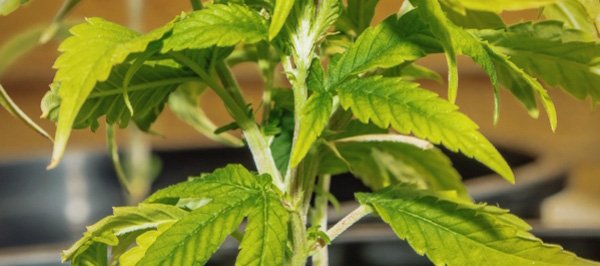
Too much moisture in the medium may result in oxygen deprivation, causing the roots to starve and start dying. As the roots decay, nutrient uptake becomes more limited, leading to deficiencies. The lack of minerals and elements, in turn, causes the leaves to turn yellow, droop, curl inward, and appear firm and swollen, among others.
How To Prevent Overwatering
If you suspect an overwatering problem, the first thing to do is water the plants less often. Again, the top inch of the soil should feel dry to touch before being watered. Remember to drench the plants until the water trickles out of the bottom holes. The growing medium should be damp – not soggy.
If the water pools on top of the substrate or takes too long to leak out of the bottom holes, then it most likely has poor drainage. If so, consider amending it with aerating materials like perlite, compost, and gypsum. Also, ensure that the chosen container has enough bottom holes to facilitate drainage. If not, drill some more. Alternatively, you can also shift to smart or air pots, which are harder to overwater.
4. Improper pH Levels
The term pH stands for “potential of hydrogen” or “power of hydrogen.” It is a logarithmic scale that runs from 1 to 14, indicating the acidity or alkalinity of a solution. Pure water, measuring pH 7.0, is neutral. Anything below is considered acidic, while values above it are basic or alkaline.
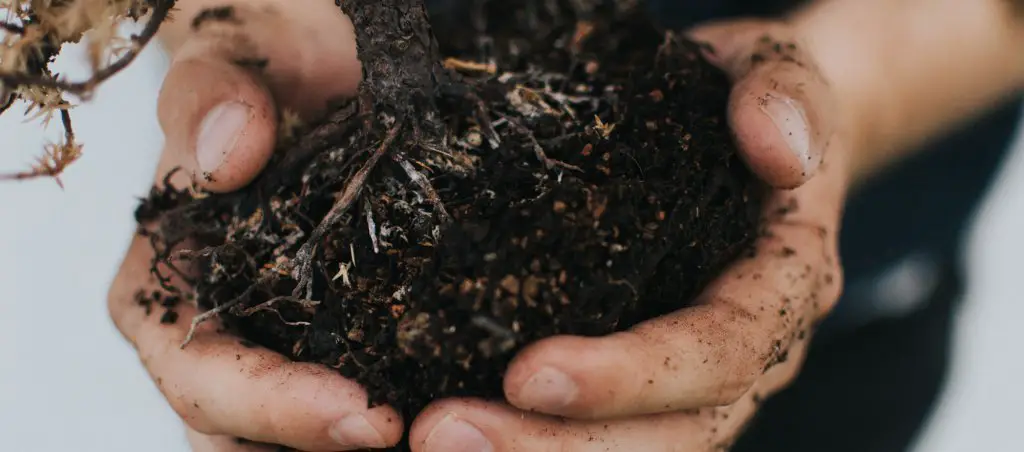
pH levels play a crucial role in plant nutrition. Marijuana plants, for instance, thrive in a slightly acidic pH range between 5.5 to 6.8. Outside of this range will already interfere with the nutrient uptake, resulting in deficiencies. Eventually, some of the leaves will turn into a sickly yellow shade as the plants starve for essential minerals.
How To Avoid pH Problems
If you suspect pH to be the cause behind the yellowing of leaves, consider testing your soil. You can send a sample to a lab for accurate pH readings. But you can also do it at home using a high-quality digital pH meter. Soil-based cannabis prefers a pH of 6.0 to 6.8. If growing in soilless media, keep it between 5.5 to 6.5.
Adjust the pH level accordingly using pH up or down solutions. To increase the alkalinity of the medium, you can also use potassium hydroxide, liming substances, and wood ash. On the other hand, aluminum sulfate, sulfur-coated urea, and sulfur can bring down the soil pH.
To avoid nutrient-related problems, monitor the pH and adjust as needed.
5. Nutrient Deficiencies
Incorrect pH level at the roots is the leading cause of nutrient deficiencies. For example, a soil pH lower than 6.0 reduces the absorption of phosphorus, calcium, and magnesium. But if it is higher than 7.0, the plants will have a hard time accessing phosphorus, magnesium, copper, iron, and zinc already in the soil.
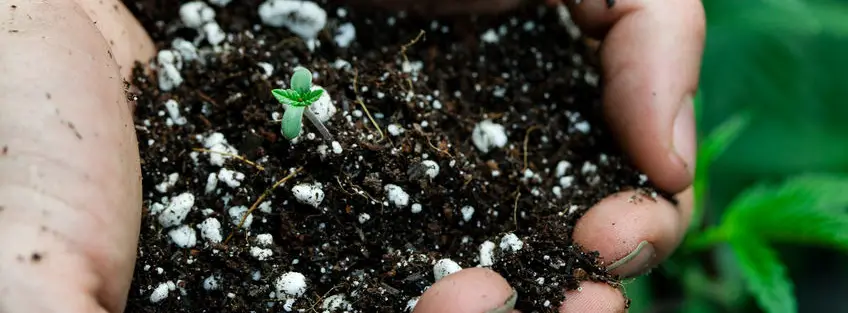
Sometimes, the nutrient levels just happen to be low – or they might be absent from the medium altogether. A laboratory analysis is needed to determine the precise nutrient content in your soil. But if you know the symptoms of different nutrient deficiencies, then you can diagnose the problem yourself and figure out exactly which nutrient is lacking.
The most common telltale sign is the yellowing of leaves. It can be triggered by a shortage of nitrogen, potassium, magnesium, and iron, among others.
Nitrogen Deficiency
Nitrogen plays a crucial role in chlorophyll production. It forms the amino acids, which serve as the building blocks of proteins. It is also a part of ATP and is used to build DNA.
Yellowing leaves, especially in older growth, is a major sign of nitrogen deficiency. The affected foliage may wilt and fall off. That is because the newer leaves are stealing most of the available nitrogen from the mature leaves. Eventually, the yellowing may move up and reach the upper leaves.
Potassium Deficiency
Potassium is involved in photosynthesis, the opening and closing of the stomata, the synthesis of proteins and amino acids, and the production of ATP. It also fortifies the plant tissues, increasing their overall resistance.
Potassium deficiency usually manifests as yellowing leaves. Other symptoms include burnt-looking leaf edges or tips, dark spots on fan leaves, curling of leaves, and older growth falling off.
Magnesium Deficiency
Magnesium plays a crucial role in photosynthesis. It is the core of the chlorophyll molecule and assists the plants in creating glucose from light energy. It also helps metabolize carbohydrates, making it more available for the plants. Without enough magnesium, the veins in the leaves will start turning yellow. Eventually, the leafage will curl and fall off.
Iron Deficiency
Iron is not a part of chlorophyll, but it contributes to leaf pigmentation and respiration. It is also involved in energy production. With iron deficiency, the yellowing first affects the newer growth. From the veins at their bases, the discoloration will spread to the older fan leaves. In time, new leaves are often rendered completely in yellow.
How To Fix Nutrient Deficiencies
Before attempting to address the deficiency, make sure that the pH falls within the ideal range first. Afterward, nourish the soil with the missing nutrients.
For a long-term solution, consider treating the soil with organic amendments, such as compost, worm castings, humic acid and fulvic acid, and mycorrhizal fungi. Aside from stabilizing the pH levels, these materials also break down organic matter, making the nutrients more bioavailable to the plants.
6. Pest Infestations
Pest attacks are the bane of every grower’s existence. It may not only damage the garden but compromise the growth and yields of the affected crops as well. Several types of pests and bugs can plague cannabis plants, each with their corresponding symptoms. Fungus gnats are notorious for turning the leaves yellow. You also need to watch out for spider, broad, and russet mites.
Fungus Gnats
Fungus gnats are tiny, fly-like insects that infest and lay eggs on warm, moist soils. It is also heavily attracted to decaying organic matter. Upon hatching, the fungus gnat larvae will start feeding on the roots, eventually damaging it. A common sign of an invasion is when small flies buzz around the plants, especially near the base. You might also spot some translucent larvae writhing on the topsoil.
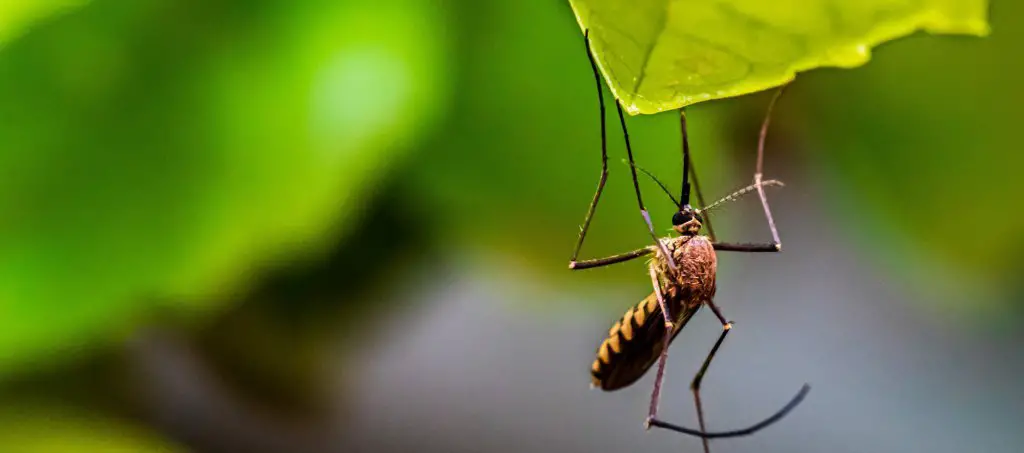
Aside from yellowing, this pest can also cause the leaves to wilt, droop, and have dark spots or patches.
Overwatered crops provide an ideal environment for fungus gnats to thrive. If you notice an attack, stop watering the plants for a few days. As the topsoil dries out, the fungus gnats will start disappearing as well. To quicken the process, spritz some neem oil on the soil or place yellow sticky cards strategically around the growing area.
Broad Or Russet Mites
Broad or russet mites, like spider mites, often dwell on the leaf undersides, where it lays eggs and sucks on the plant cells. It is practically impossible to see it without a magnifying tool, making it hard to identify. It is also extremely damaging and secretes toxic saliva that can stunt the growth and development of cannabis crops.
Some of the telltale signs of broad and russet infestations include the yellowing, curling, and drooping of leaves. The foliage may also be abnormally glossy. In most cases, the symptoms will appear worse in certain spots, which is where the invasion is centered.
Spider Mites
Spider mites are a common pest, but it can be hard to detect since it is incredibly small. It is usually found on the leaf undersides, laying translucent eggs and creating silk webbings. The mites also have razor-sharp mouths to pierce and munch on the plants, leaving specks and bite marks on the surface. The appearance of yellow or pale spots on the foliage is another clue of an infestation.
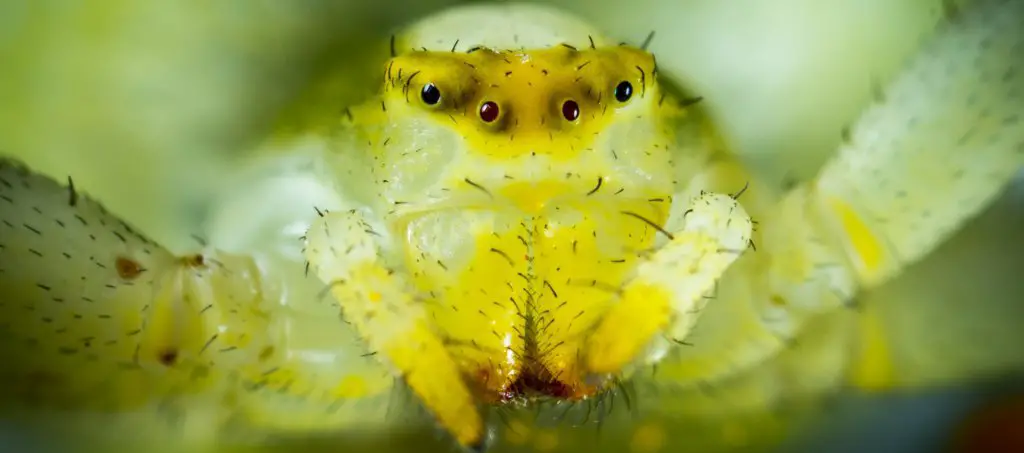
Spider mites like high temperatures and low humidity, reproducing rapidly under these conditions. To lower their population, start by boosting the airflow in the grow room. Have some fans blowing over the canopy and the topsoil. To exterminate the mites and their eggs, spray some contact pesticides on the leaf undersides. Make sure to use only safe ingredients, such as insecticidal soap, garlic, and neem oil.
7. Bud Rot
Bud rot – also known as gray mold or gray rot – is a type of fungus that attacks cannabis from the inside out, eventually causing its decay. It can affect the crops in all stages of growth. The spores also spread quickly across the growing area, contaminating any plants with cuts and tears on the surface. This damaging mold thrives in a cool, moist environment.
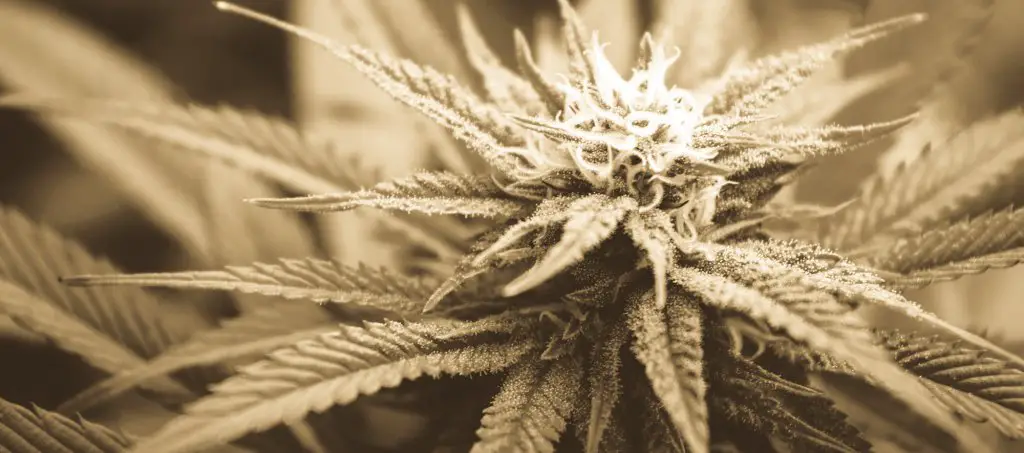
Once infected with bud rot, one or two marijuana leaves may turn yellow overnight. They also usually fall out easily. Mostly, it is due to the white, brown, or dark gray mold feasting on the bud’s interior. The leaves near the entry point of the rot may start wilting as well.
How To Stop Bud Rot
As soon as you detect the bud rot, snip off the decayed parts immediately. Be extra careful so that it will not touch the rest of the plant. Inspect the rest of the growing area, and continue removing any rotted parts. Spray some organic disinfectants on the contaminated plants. Finally, sterilize the grow room to get rid of the fungal spores, focusing on surfaces, gardening tools, and pots.
To prevent the bud rot, you need to adjust the temperature and humidity to suitable levels. Maintain a warm environment of around 77°F (25°C). As for the relative humidity, keep it below 50% at all times. Hygrometers, in this case, will come in handy.
Since the mold proliferates in most areas with poor airflow, make sure that the garden has ample ventilation. Also, prune dense bushes for better air circulation. Pay attention to the middle and lower part of the plant.
When Not To Worry About Yellowing Leaves
Yellow leaves are not always a cause for alarm. It sometimes occurs for perfectly normal reasons as well. For instance, in young cannabis plants, the bottom leaves usually turn yellow and die off as they receive less light. Expect to lose the cotyledons up to the first three sets of true leaves.
Another example is when harvest time looms closer. During this period, growers will flush the plants – or feed them only high-quality water instead of nutrients up until the collection. Doing so forces the plants to use up any leftover nutrients, resulting in smoother, more flavorful buds. Eventually, the leaves should lose their color.

